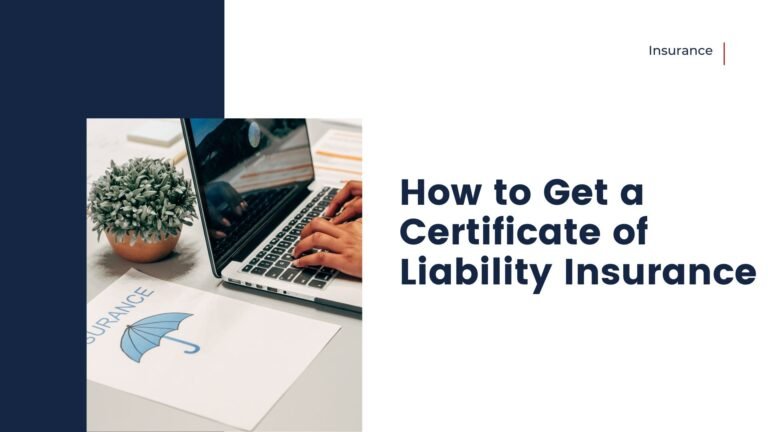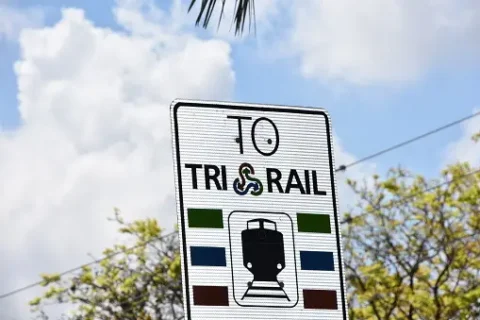Are you a small business owner looking to understand the intricacies of liability insurance? One essential document that you may need to provide to potential clients or partners is a Certificate of Liability Insurance. In this blog post, we will explore how to get a certificate of liability insurance, why it is important, and how to use it effectively.
Understanding the Basics of Liability Insurance:
At its core, liability insurance acts as a safeguard, designed to protect businesses and individuals from the financial implications tied to claims of negligence or malpractice. This form of insurance is pivotal in covering expenses that may arise due to legal battles, including but not limited to, attorney fees, settlements, and court costs. Moreover, liability insurance extends its protection to cover medical expenses for any injuries that may be claimed as a result of the insured’s actions or inactions.
This type of insurance is categorized into several specific forms, each tailored to different scenarios and risks. General liability insurance, for example, offers broad coverage for bodily injury, property damage, and advertising injuries, making it a staple for businesses across various industries. Professional liability insurance, on the other hand, is more specialized, targeting the risks associated with professional advice and services. This is particularly crucial for professionals such as consultants, lawyers, and doctors, whose guidance or treatment could lead to substantial claims if deemed negligent.
The protective shield that liability insurance offers is not just about legal defense; it’s also about maintaining a company’s financial stability and reputation in the face of potential claims. Without such coverage, a single lawsuit could potentially bankrupt a small business or significantly impair an individual’s financial health.
In delving into the world of liability insurance, it’s vital to understand these nuances to ensure that the coverage you seek aligns with the specific risks and exposures inherent to your operations or professional activities. This foundational knowledge is crucial before moving on to the procedural aspects of obtaining a Certificate of Liability Insurance, which serves as tangible proof of your preparedness against these identified risks.
Identifying the Need for a Certificate of Liability Insurance:
Navigating the scenarios that necessitate a Certificate of Liability Insurance can be critical for business operations and compliance. This document serves as a linchpin in various professional settings, ensuring that parties engaging in business together are mutually protected against potential liabilities.
For instance, contractors aiming to secure projects will often find that clients demand a Certificate of Liability Insurance as a prerequisite to starting any work. This requirement safeguards the project owner by confirming that the contractor has the necessary insurance to cover liability claims that could arise during the course of the project.
In the realm of real estate, landlords frequently mandate that their tenants produce a Certificate of Liability Insurance. This stipulation is put in place to minimize the risk of bearing financial responsibility for any damages or injuries that occur on the property due to the tenant’s operations.
It is not uncommon for event organizers, too, to request this document from vendors and participants. The rationale here is to ensure that any liability, be it from accidents or negligence, does not fall squarely on the shoulders of the event organizers but is shared according to the insurance coverages held by all involved parties.
For businesses engaging in agreements or contracts that entail a considerable degree of risk or liability exposure, presenting a Certificate of Liability Insurance becomes a key step in finalizing those agreements. This document is often seen as a badge of responsibility, indicating that a business is not only aware of potential risks but is also proactively managing those risks through appropriate insurance coverage.
Steps to Obtain a Certificate of Liability Insurance:
The process of securing a Certificate of Liability Insurance is straightforward but requires attention to detail to ensure accuracy and compliance with the requestor’s requirements.
- The initial step involves reaching out to your insurance company or broker, who facilitated your liability insurance policy.
- Communicate your request for a Certificate of Liability Insurance clearly, specifying the reason for the request and any specific requirements or limitations that need to be noted on the certificate.
- Provide essential details about your policy, including your policy number, the types and limits of coverage, and any additional insureds to be listed.
- Furnish the insurance company with the name and address of the certificate holder—the entity requesting proof of your insurance.
- Review the certificate upon receipt for accuracy, and maintain open communication with your insurance provider throughout the process.
What to Look for in Your Certificate of Liability Insurance:
Upon receiving your Certificate of Liability Insurance, conducting a thorough review is critical to ensure its correctness and completeness.
- Confirm the policy number and dates of coverage.
- Ensure that the types of coverage listed meet or exceed the minimum requirements dictated by the contract or the entity requesting the certificate.
- Pay attention to the named insured on the certificate.
- Verify the designation of any additional insureds.
- Ensure the certificate holder’s information is correct.
Common Mistakes to Avoid When Requesting Your Certificate:
Navigating the process of securing a Certificate of Liability Insurance requires precision and forethought to sidestep common pitfalls.
- Neglecting to verify the specific requirements or stipulations outlined by the requesting party.
- Providing inaccuracies or inconsistencies in the information provided to the insurance company.
- Assuming that all requests for certificates are uniform.
Using Your Certificate of Liability Insurance Effectively:
Having your Certificate of Liability Insurance in hand is a pivotal moment, but its utility extends beyond simply acquiring it.
- Proactively distribute copies to parties requiring proof of your insurance.
- Anticipate the expiration date of your certificate and engage with your insurance provider well in advance to renew your certificate.
- Keep a digital copy easily accessible for quick sharing.
- Maintain a well-organized filing system for all your insurance documents.

Daniel J. Morgan is the founder of Invidiata Magazine, a premier publication showcasing luxury living, arts, and culture. With a passion for excellence, Daniel has established the magazine as a beacon of sophistication and refinement, captivating discerning audiences worldwide.





